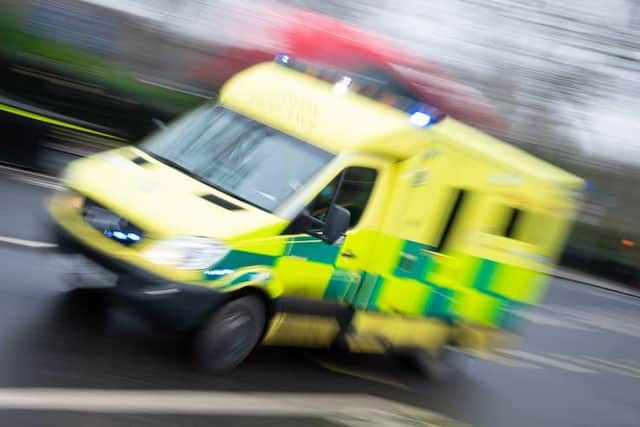The pandemic death hotspots in Doncaster are revealed
and live on Freeview channel 276
Data published by the Office for National Statistics comparing the number of deaths registered during the pandemic to a baseline from previous years shows some areas of the country were significantly more affected than others.
The Health Foundation said the virus has laid bare inequalities across England and Wales, with poor health, deprivation and stretched public services to blame for increased exposure.
Advertisement
Hide AdAdvertisement
Hide AdIn the 14 months to the end of April, there were 4,356 deaths registered in Doncaster – 642 (17.3 per cent) more than the 3,714 predicted, according to the ONS figures.


Of the deaths, 799 had Covid-19 listed as the main cause – however, many Covid-related deaths at the start of the pandemic may have been undiagnosed, the ONS cautioned.
A further breakdown for Doncaster, released for the first time, also reveals which of the area's 39 neighbourhoods had the highest and lowest excess death rates during the pandemic.
The measurement compares the number of deaths registered during the period with how many were predicted based on previous mortality rates between 2014 and 2019.
Advertisement
Hide AdAdvertisement
Hide AdIt has been described as the key metric for the impact of the pandemic by Professor Chris Whitty, the Government's chief medical officer.
In Doncaster, the neighbourhoods with the highest excess death rates were:
1) Balby South – 153 deaths, 53 (53 per cent) more deaths than expected, 40 with Covid-19 listed as the main cause;
2) Kirk Sandall and Barnby Dun – 138 deaths, 43 (45.3 per cent) more deaths than expected,21 due to Covid-19;
Advertisement
Hide AdAdvertisement
Hide Ad3) Thorne – 251 deaths, 73 (41 per cent) more deaths than expected, 41 due to Covid-19;
The neighbourhoods with the lowest excess death rates were:
1) Central Doncaster and Hyde Park – 82 deaths, seven (7.9 per cent) fewer than expected, including 14 with Covid-19 listed as the main cause;
2) Warmsworth, Braithwell and Stainton – 63 deaths, five (7.4 per cent) fewer than expected, including 12 due to Covid-19;
3) Adwick le Street and Woodlands – 147 deaths, six (3.9 per cent) fewer than expected, including 37 due to Covid-19.
Advertisement
Hide AdAdvertisement
Hide AdIn its Covid-19 Impact Inquiry report, the Health Foundation said people aged under 65 living in the most deprived areas were almost four times more likely to die from the virus, compared to those in the most affluent.
It found those in poor health, cramped housing conditions and some working environments faced an increased risk of exposure.
The group now wants the Government to address the harm caused by the pandemic and invest more in helping lift people out of poverty.
Across England and Wales, the ONS reported that two periods over the 14 months – March 2020 to July 2020 and September 2020 to March this year – saw the highest rates for excess deaths.
Advertisement
Hide AdAdvertisement
Hide AdIn Doncaster, the highest number of excess deaths came in November last year when there were 206.
The Department of Health and Social Care said increasing vaccine uptake was a “key step” to addressing the disparity of outcomes for those who catch Covid.
A spokesperson said: “The vaccines are saving lives and building a wall of protection against the disease.”
In these confusing and worrying times, local journalism is more vital than ever. Thanks to everyone who helps us ask the questions that matter by taking out a subscription or buying a paper. We stand together. Liam Hoden, editor.
Comment Guidelines
National World encourages reader discussion on our stories. User feedback, insights and back-and-forth exchanges add a rich layer of context to reporting. Please review our Community Guidelines before commenting.
